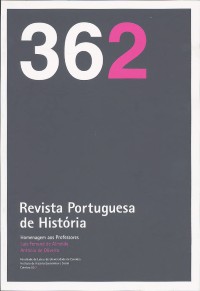Please use this identifier to cite or link to this item:
https://hdl.handle.net/10316.2/46057| DC Field | Value | Language |
|---|---|---|
| dc.contributor.author | Araújo, Luís Manuel de | - |
| dc.date.accessioned | 2019-03-19T16:58:54Z | |
| dc.date.accessioned | 2020-10-05T05:41:53Z | - |
| dc.date.available | 2019-03-19T16:58:54Z | |
| dc.date.available | 2020-10-05T05:41:53Z | - |
| dc.date.issued | 2003 | - |
| dc.identifier.issn | 0870-4147 | - |
| dc.identifier.issn | 2183-3796 (digital) | - |
| dc.identifier.uri | https://hdl.handle.net/10316.2/46057 | - |
| dc.description.abstract | O artigo sublinha a participação da deusa Hathor no bem-estar dos defuntos que anseiam por navegar no oceano celestial. Apesar de estar vocacionada para o amor, a alegria e a fecundidade, Hathor surge em forma de vaca, como zeladora da necrópole tebana, no capítulo 186 do «Livro dos Mortos». É dada a tradução do texto hieroglífico presente no papiro de Ani, salientando-se a presença de quatro barcas: a barca solar de milhões de anos ou barca da eternidade, a barca depet (tomada aqui no sentido mais geral de embarcação), a barca nechemet de Osiris (feita por Hathor) e ainda a barca presente no verbo djai (que significa «navegar no céu»). A navegação celestial era a garantia da eternidade porque o defunto osirificado podia diariamente, tal como o deus Ré, viajar na barca solar no céu diurno e no céu nocturno. | por |
| dc.description.abstract | This article emphasizes the role of the goddess Hathor in the well being of the deceased, most anxious to navigate in the celestial Ocean, Although the goddess is mainly oriented towards love, joy and fecundity, Hathor appears in the shape of a cow in Chapter 186 of tha «Book of the Dead», as the janitor of the Teban necropolis. It is also given the translation of the hieroglyphic text of the Ani’s papyrus and emphasized the presence of the four boats: the Eternity boat, also called the solar boat of million years; the depet boat, seen here closer to the general sense of a common ship; the Osiris nechmet boat, that was madeby Hathor herself and, finally, the verb djai and the boat seen there, which means «to navigate in the sky». The celestial navigation was the Eternity’s assurance, for the Osiris-like deceased could travel everyday inside the solar boat, trough daily and nightly skies, like the god Re. | eng |
| dc.language.iso | por | - |
| dc.publisher | Imprensa da Universidade de Coimbra | - |
| dc.rights | open access | - |
| dc.title | A propósito do capítulo 186 do «Livro dos Mortos»: Hathor e as barcas | por |
| dc.type | article | - |
| uc.publication.collection | Revista Portuguesa de História nº 36 vol. 2 | - |
| uc.publication.firstPage | 469 | - |
| uc.publication.issue | 36 | - |
| uc.publication.lastPage | 476 | - |
| uc.publication.location | Coimbra | - |
| uc.publication.journalTitle | Revista Portuguesa de História | - |
| uc.publication.volume | 2 | por |
| dc.identifier.doi | 10.14195/0870-4147_36-2_27 | - |
| uc.publication.orderno | 27 | - |
| uc.publication.area | Artes e Humanidades | - |
| uc.publication.manifest | https://dl.uc.pt/json/iiif/10316.2/46057/271140/manifest?manifest=/json/iiif/10316.2/46057/271140/manifest | - |
| uc.publication.thumbnail | https://dl.uc.pt/retrieve/12204875 | - |
| item.grantfulltext | open | - |
| item.fulltext | With Fulltext | - |
| Appears in Collections: | Revista Portuguesa de História | |
Files in This Item:
| File | Description | Size | Format | |
|---|---|---|---|---|
| a_proposito_do_capitulo_186_do_livro_dos_mortos.pdf | 627.28 kB | Adobe PDF |  |
Items in DSpace are protected by copyright, with all rights reserved, unless otherwise indicated.
